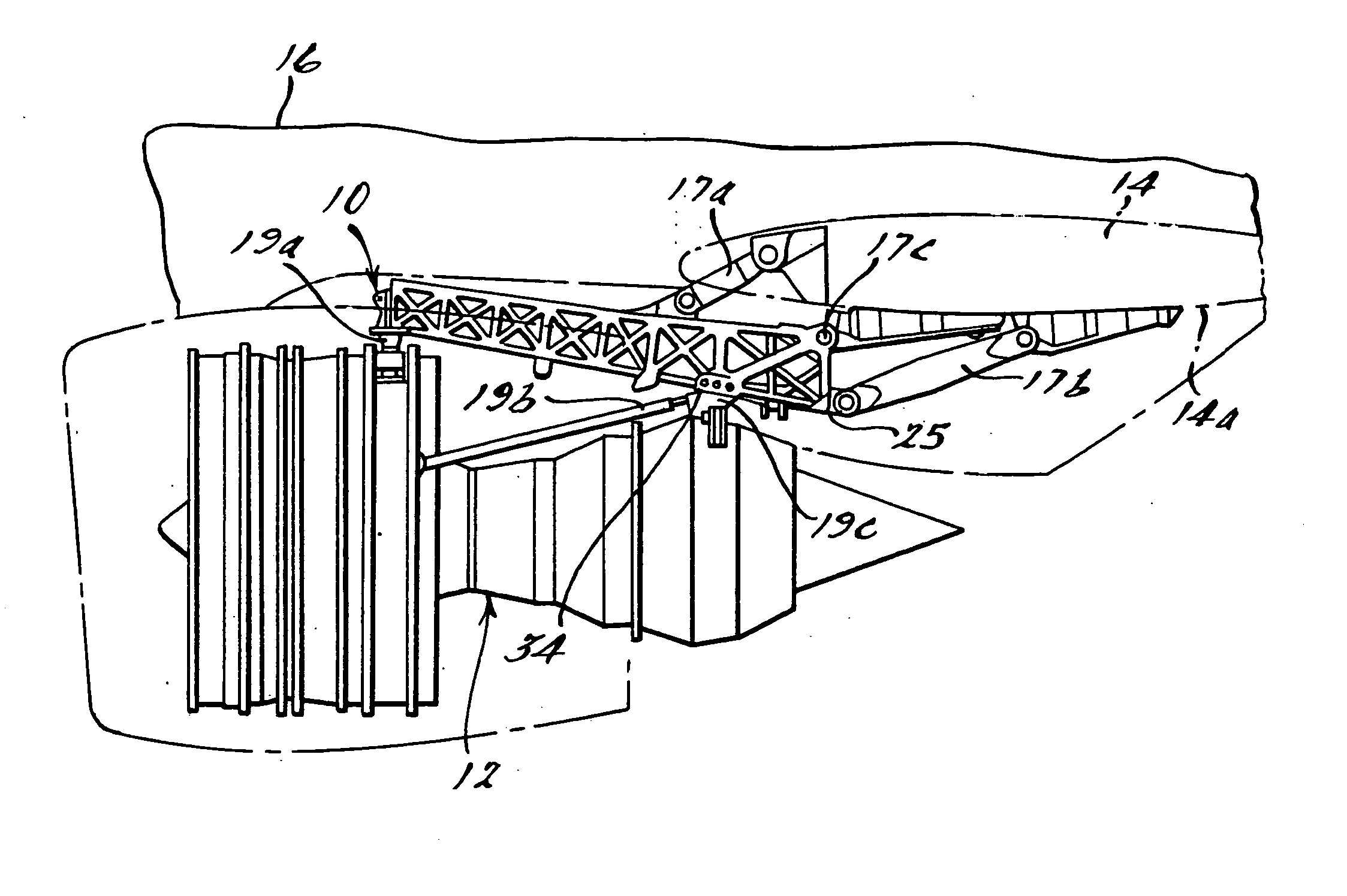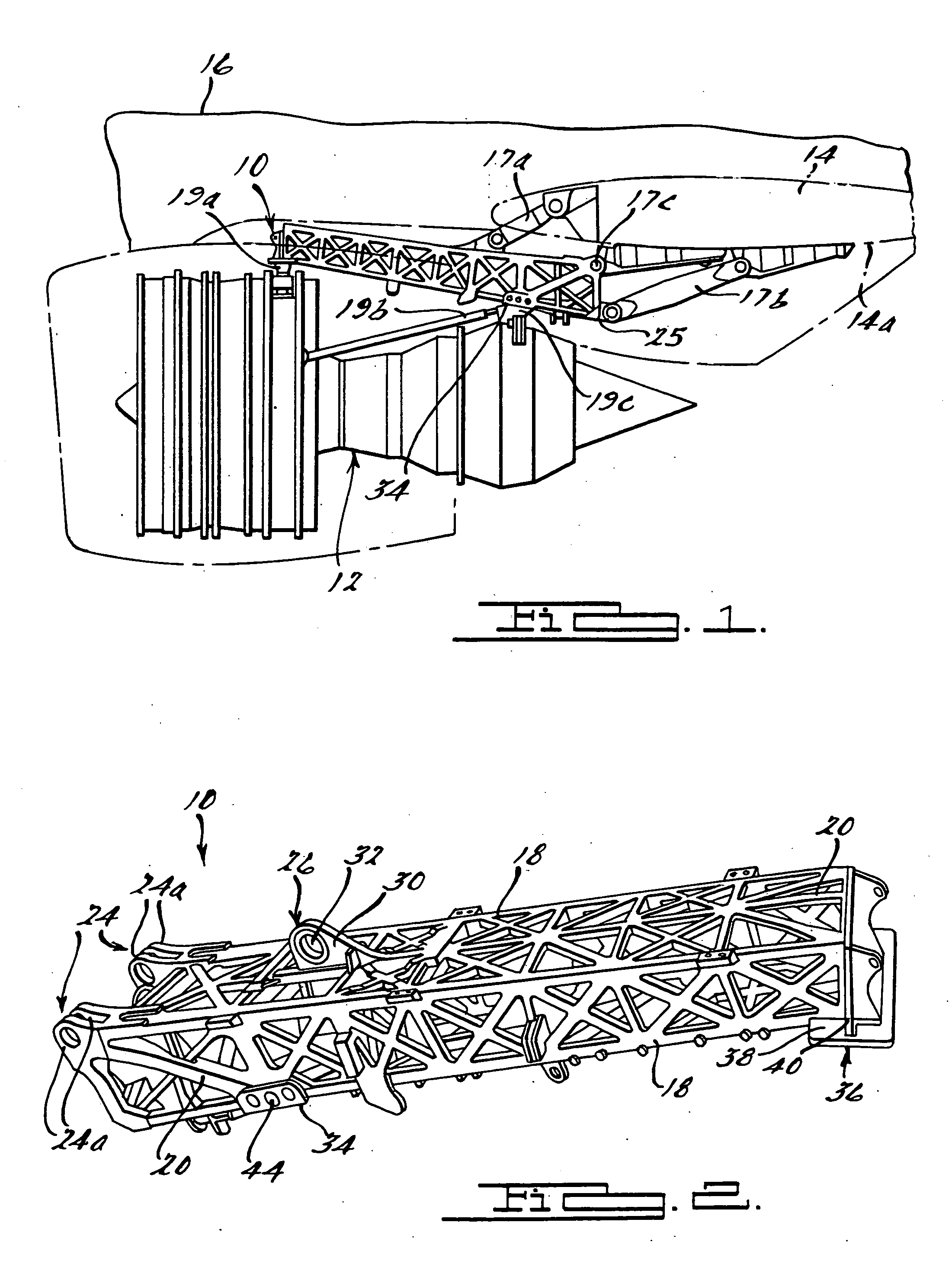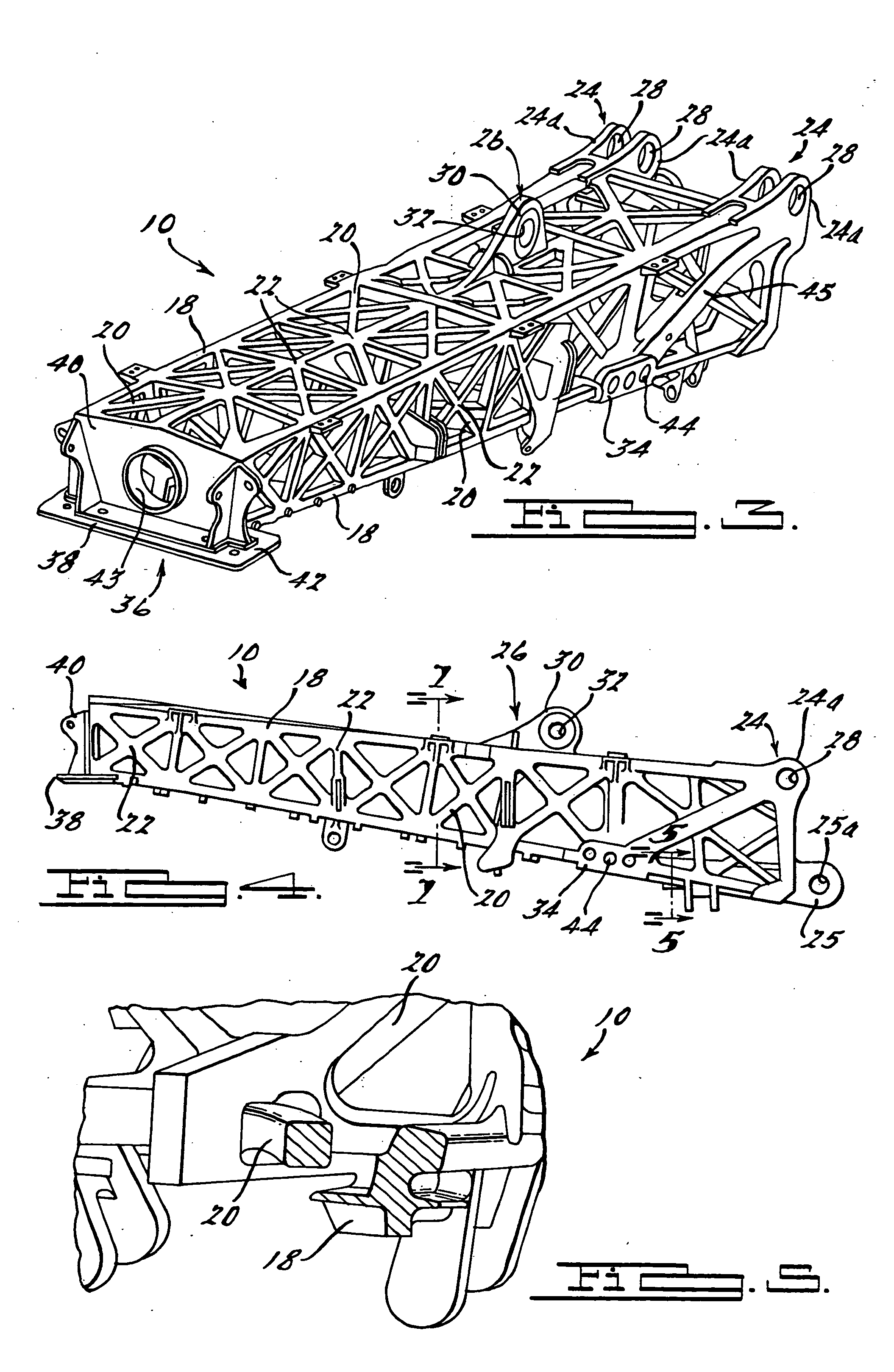Cast unitized primary truss structure and method
a primary truss and cast technology, applied in the field of truss structures, can solve the problems of large cast support structures traditionally not being used, monolithic structural support elements formed from casting processes, and unsatisfactory use as primary components, and achieve the effect of more weight efficiency and cost-effective production
- Summary
- Abstract
- Description
- Claims
- Application Information
AI Technical Summary
Benefits of technology
Problems solved by technology
Method used
Image
Examples
Embodiment Construction
[0020] The following description of the preferred embodiment(s) is merely exemplary in nature and is in no way intended to limit the invention, its application, or uses.
[0021] Referring to FIG. 1, there is shown a simplified illustration of a truss structure 10 in accordance with a preferred embodiment of the present invention specifically adapted for use as an engine strut or pylon on a commercial aircraft. The truss structure 10, in this example, is used to secure a jet engine 12 to an under surface 14a of a wing 14 of a commercial aircraft 16 via links 17a and 17b. Links 19a, 19b and 19c secure the jet engine 12 to the truss structure 10.
[0022] Referring to FIGS. 2-4, the truss structure 10 is shown in greater detail. The truss structure 10 includes a plurality of elongated, tubular rails 18 arranged to form an overall generally rectangular shaped piece when viewed from one end of the truss structure 10. The elongated rails 18 are preferably either circular in cross-section or ...
PUM
| Property | Measurement | Unit |
|---|---|---|
| temperature | aaaaa | aaaaa |
| structure | aaaaa | aaaaa |
| thickness | aaaaa | aaaaa |
Abstract
Description
Claims
Application Information
 Login to View More
Login to View More - R&D
- Intellectual Property
- Life Sciences
- Materials
- Tech Scout
- Unparalleled Data Quality
- Higher Quality Content
- 60% Fewer Hallucinations
Browse by: Latest US Patents, China's latest patents, Technical Efficacy Thesaurus, Application Domain, Technology Topic, Popular Technical Reports.
© 2025 PatSnap. All rights reserved.Legal|Privacy policy|Modern Slavery Act Transparency Statement|Sitemap|About US| Contact US: help@patsnap.com



